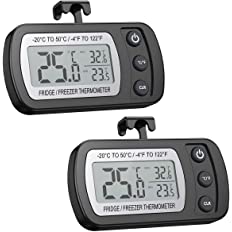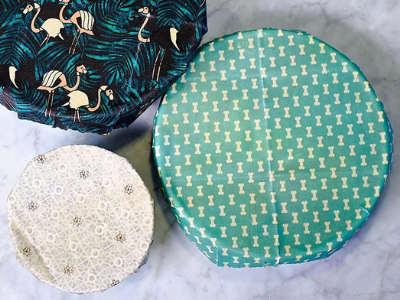Smart Meters are coming
The Australian Energy Market Commission (AEMC) is officially starting its Accelerating Smart Meter Deployment (ASMD) reforms. If you don’t already have a smart meter, you will by the end of 2030.
Your fridge is one of the few appliances that runs continuously. Here's how to use it properly, to minimise energy costs, and maximise the life of this essential appliance.

Your fridge is one of the few appliances that you’ll run continuously, plus it keeps the beers cold, so it makes sense to check up on your fridge and give it the love it deserves. You’ll minimise energy costs, and you’ll maximise the life of this essential appliance.
Clean and if necessary defrost your fridge. It will work more efficiently, and who knows, you might even find a whole civilisation in there.
You never know what you'll find in your freezer ...
It’s essential for food safety that your fridge temperature stays between 3 °C and 4 °C for the fridge, and between -15 °C to -18 °C for the freezer. Any warmer means harmful bacteria can grow, which is a health hazard.
Check and adjust the settings if necessary, and you should re-check at the change of seasons too because the internal temperature of your fridge can be impacted by environmental temperature.
Fridge thermometers are designed to clip onto the racks in your fridge and freezer so you can keep an eye on the temperature.

Waterproof, LCD Display, ℃/℉ Switch + Max/Min Record, for Kitchen, Home, Restaurant fridge & freezer. 2 Pack, Battery Included.
Even the best fridge in the world won’t be much good unless you store food in it the right way.
Your fridge has dedicated sections and compartments for different food items. You should use them!
Put your meat in the chiller, your vegies in the crisper, and butter and cheese goes in the dairy compartment. But the egg holders that come with most fridges are not recommended, a cardboard carton is best.
Keep the most frequently used items at the front of the fridge so you don’t have to keep the door open while searching.
Some foods such as avocado, eggs, cheese and butter can absorb smells from other food items, so cover everything up to avoid cross-contamination of smells and flavours.
Use beeswax wraps rather than clingfilm for an environmentally sustainable and reusable alternative.

Our friends at Sustainable Wraps make handmade beeswax fabric for covering food and dishes instead of single-use plastic. Re-use them for up to 12 months, then compost at the end of their life.
Freezer burn is what happens when the very cold, very dry air of the freezer dries food out.
To avoid freezer burn, always use tightly sealed containers, or be sure to thoroughly wrap everything.
Frozen foods can form a solid frozen mass which is hard to deal with when you’re ready to use it.
When you’re freezing things like sausages or chicken breasts, they’ll be much easier to divide and defrost if they were spread out in a single layer before freezing. If there’s a lot to freeze, use two containers.
One of the most overlooked tips is to keep a sharpie pen in your kitchen drawer and label your frozen items clearly. This means you’ll never lose at ‘freezer roulette’ again by finding you’ve defrosted chile con carne rather than bolognese sauce.
Don’t put your hot leftovers straight into the fridge or freezer. This increases the ambient temperature in the fridge, making it work harder to bring the temperature back down.
It’s also possible that putting hot items into the fridge can increase the temperature of other foods around them, which can cause food to go off or even give you food poisoning.
Let your hot leftovers cool down before putting them in the fridge. If you’re pressed for time, things will cool faster if you portion it into smaller containers. Food should no longer be steaming when you put it in the fridge or freezer.
Clean those coils! The condenser coils are located on the back of the fridge or across the bottom. You may have to remove a grill to get to them, but that usually just involves unclipping a cover, or removing a few simple screws.
The coils cool and condense the refrigerant. If the coils are clogged with dirt, dust, debris, pet hair etc, they can’t efficiently release heat, which means higher energy consumption.
You’ll need to roll or move the fridge away from the wall to get at the coils, which gives you an opportunity to clean the floor underneath and finally sweep up all the lost grapes, dog treats, and pieces of cereal that somehow find their way under there.
You can buy special coil-cleaning tools for this job, but a vacuum cleaner brush attachment will do the trick. Just run the vacuum over and under the coils, removing dust as you go. Clean the condenser fan while you’re at it, too.
Your fridge door seal keeps the cold in and the warm out. If the seal does not function well, your fridge won’t either.
Clean the door seal gasket periodically with warm, soapy water to help prevent crumbs and debris from getting lodged in its folds, which can create points of wear that will damage the seal.
Check how well the fridge door seals by closing the door seal onto a sheet of paper. It should hold the paper firmly in place, and there should be noticeable resistance when you pull out the paper from the closed fridge door.
If the paper falls out on its own, or if it can be removed without resistance, then the door isn’t sealing well and cold air will escape, making the unit work harder, and use more energy to maintain the right temperature.
If it’s leaking, cracked or deteriorated, you should replace the seal. It’s much easier than you think to replace your own fridge seal.
Savings as a Service is the blog site and newsletter from Bill Hero. Subscribe now and get your energy savings tips and information delivered fresh to your inbox every month.